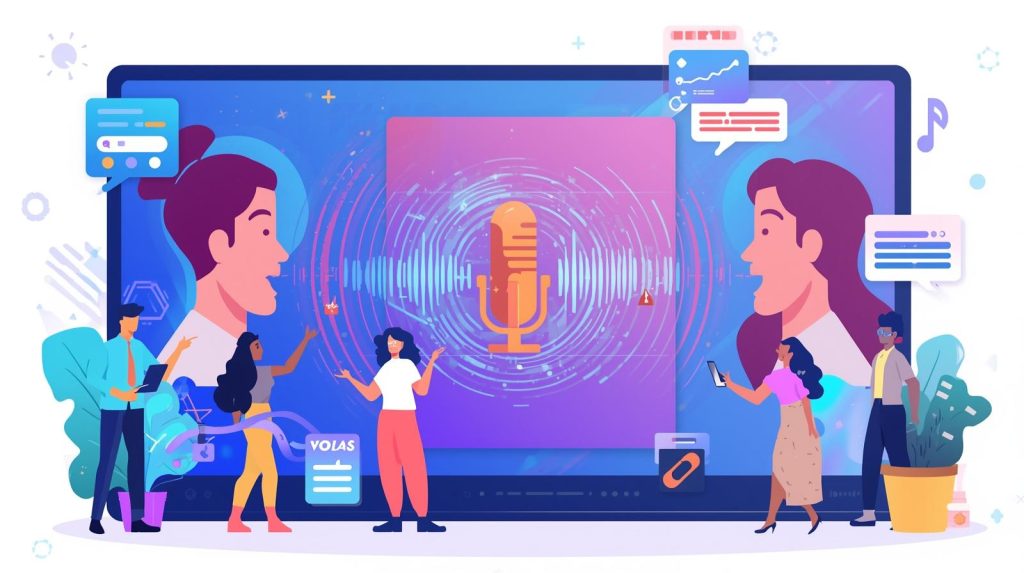
Voice Cloning in 2025: Risks, Laws, and New Use Cases
Introduction
In 2025, one of the hottest conversations in AI isn’t just about chatbots or image generators—it’s about voice cloning. From hyper-realistic celebrity voiceovers to AI-powered customer support, cloned voices are shaping industries and sparking heated debates.
But as this technology advances, so do its risks. Voice cloning sits at the intersection of innovation, ethics, and law, raising critical questions worldwide.
So, what makes voice cloning in 2025 different from the early robotic voices of Siri or Alexa? And how can we balance the benefits with the challenges? Let’s explore.
1. What is Voice Cloning in 2025?
Voice cloning is the process of creating an artificially generated voice that sounds almost identical to a real person. Unlike early text-to-speech (TTS) systems, which were flat and robotic, modern AI voice technology replicates tone, rhythm, accent, and emotion with near-perfect accuracy.
By 2025, the technology has reached new heights:
- Ultra-realistic: indistinguishable from human speech.
- Real-time: capable of cloning voices instantly from short audio samples.
- Emotionally adaptive: able to convey joy, sadness, empathy, or authority.
Industries already adopting this tech include:
- Film and entertainment: dubbing and recreating legendary voices.
- Healthcare: restoring speech for patients.
- Business: building branded audio identities.
Voice cloning is no longer experimental—it’s mainstream AI voice technology.
2. The New Use Cases for Voice Cloning
The applications of cloned voices are multiplying across industries in 2025:
Entertainment & Media
Studios now use voice cloning to dub films seamlessly into multiple languages while preserving the actor’s natural voice. Documentaries and sequels even bring back the voices of iconic figures.
Customer Service & Accessibility
AI-powered assistants greet customers with voices that feel warm and human. For people with disabilities, voice cloning provides personalized assistants and tools like screen readers in familiar voices.
Education & Training
Students engage with AI tutors that adapt their tone to encourage learning. Language learners practice pronunciation with native-like accents, making lessons far more immersive.
Healthcare
Voice cloning is helping patients regain their sense of identity. Doctors can rebuild a patient’s voice using past recordings, restoring confidence and communication.
Business & Marketing
Brands are experimenting with custom AI voices for ads, podcasts, and smart devices. Influencers even license their voices so they can scale content without being physically present.
Case study: In 2025, a major e-commerce company launched a branded AI voice assistant. Within months, customer engagement rose by 30%, showing how powerful voice-driven connections can be.
3. Risks and Challenges of Voice Cloning
Despite its benefits, voice cloning comes with serious risks.
Misinformation & Deepfakes
AI can now mimic politicians, celebrities, or journalists, spreading false information that can influence elections or damage reputations.
Fraud & Security Risks
Cybercriminals use cloned voices in phone scams to impersonate executives or loved ones. Since many banks and services still rely on voice authentication, this creates dangerous vulnerabilities.
Ethical Concerns
Should a voice be cloned without consent? How do we handle the emotional impact of hearing a deceased loved one’s voice? These are sensitive, unresolved issues.
Privacy Issues
Because voices are now considered biometric data, questions around ownership, storage, and misuse of this data are more pressing than ever.
4. Laws and Regulations in 2025
Governments around the world are racing to keep up with AI voice technology.
- United States: Several states passed deepfake and voice cloning laws, requiring consent and clear disclosure. Federal lawmakers are also debating a national “right to voice”.
- European Union: The AI Act classifies voice cloning as high-risk AI, demanding transparency and strict safeguards.
- Asia: China enforces tough rules on synthetic media, while Japan and South Korea focus on protecting identity rights and intellectual property.
The debate around voice ownership continues. Many experts argue a person’s voice should be treated as intellectual property, just like a song or a written work.
Businesses are responding by adopting compliance frameworks, securing voice licenses, and embedding AI watermarking for accountability.
5. Best Practices for Safe and Ethical Voice Cloning
For businesses and creators, responsible use of voice cloning is crucial. Here are some best practices:
- Always get consent and licensing before cloning a voice.
- Use watermarking or traceable audio signatures to identify AI-generated voices.
- Educate users about scams involving cloned voices, especially in finance.
- Adopt AI ethics guidelines to ensure transparency and fairness.
Companies that prioritize trust will not only stay compliant but also strengthen their customer relationships.
6. The Future of Voice Cloning Beyond 2025
What’s next for voice cloning? Experts predict:
- Hyper-personalization: voices that adapt to mood, context, and branding.
- Integration with AR/VR and the metaverse, enhancing immersion with realistic voice avatars.
- Smarter security tools that can instantly detect cloned voices.
The challenge will be balancing innovation with regulation. Businesses that invest in responsible AI practices today will lead tomorrow’s market.
Conclusion
Voice cloning in 2025 has moved beyond science fiction. It’s reshaping entertainment, healthcare, business, and accessibility. But with opportunity comes responsibility.
The takeaway: voice cloning = innovation + accountability. If businesses, regulators, and society collaborate, we can unlock its full potential while minimizing risks.For more insights on AI trends, explore our AI blog here.
Stay connected with us on HERE AND NOW AI & on:

